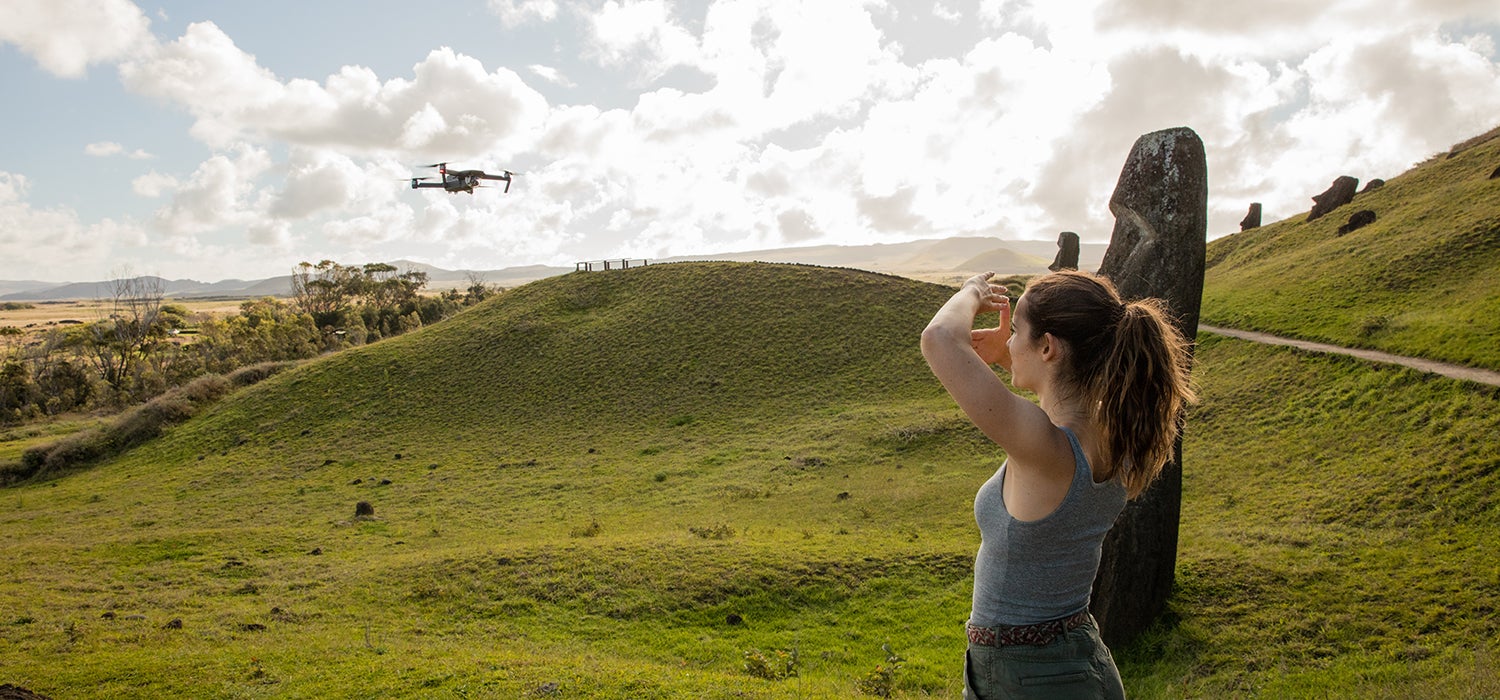How to Use Drones to Elevate Your Storytelling

Capturing content with a drone gives a whole new dimension to photography projects, and that’s where the story telling element gets really interesting.
“For me as a photographer, I have more options. Instead of simply shooting a tree, I can shoot from the top of a tree to make a reveal, I can use the tree in my shot,” says Anders Carlson, founder and pilot of Visionary Aerials. “This is something that couldn’t have happened 10 years ago.”
Jeff Moore, Senior Executive Producer at AIM Studios, agrees saying the evolution of technology, in products like the DJI Mavic Pro, now means that a camera, drone and gimbal are all included in one product, and at a reasonable price, making it exciting for pilots and photographers. Even better – drones like the DJI Mavic Pro are compact and portable so you can tuck it in your bag and go.
Here are pro tips for ways to utilize your drone to capture Hollywood-esque story lines without the Hollywood-sized budget.
Setting the scene
Moore says drones are good tools for setting the stage of your story with “as epic an image as possible.” Josh Haskins, Producer for Warren Miller Entertainment, adds that, in addition to setting the master shot, a drone’s wider camera angle and unique perspective are able to establish the “where” of a story line. This becomes all the more important when you are in sweeping, wide open spaces or capturing groups of people. Moore also appreciates the ability to use drones to smoothly change the scene without changing the topic—think showing a close-up shot of a hiker, then using a drone to pan out and show where the hiker is going.
Learn how to use your Mavic Pro with this instructional video.
Use a drone as if it’s another camera angle
Drones provide unique camera angles most photographers wouldn’t be able to get otherwise. From fluid follow sequences to wrapping around a subject at a consistent level, a drone puts the technology in your hands.
“You have the ground angle from a tripod or handheld. You have a POV angle from a body or vehicle mounted camera. And now you have a drone for an aerial shots,” says Haskins, who specializes in winter sports and action-based filming. “When used together, multiple angles add variety to a story.”
Haskins says his team likes to use drones for the subtle movements they create, adding the goal is to use them in a way “that creates a look and shows the audience the material and shot itself, without being a shout out that ‘we used a drone!’” Making the most of the nimble movements of a drone, you can create impressive scenes to enhance your storytelling.
A drone is a tool like any other camera, and, ideally, you want to the tool to be invisible.
Learn more about the Mavic Pro’s unique technology.
Accessibility
The maneuverability of drones, hopefully, lessens the need of photographers getting into precarious positions to nail a shot. Think about trying to capture that waterfall, but not wanting to lean too far over. Drones are also handy in places that are difficult or unsafe to get to, and for when you can envision the shot, but can’t figure out how to make it work from the ground.
“Drones provide access to places we couldn’t have gotten before,” Haskins says. “They open new avenues of exploration.”
Accessibility is a critical aspect in Haskins work, which regularly involves shooting while navigating difficult terrain, mountains with limited access and potentially dangerous snow conditions.
Travel Sequences
When it comes to telling stories, drones are useful for demonstrating travel or movement. Envision a vehicle or a hiker going from point A to point B.
“There is something really stunning about shooting vehicles driving or skiers touring through trees and flat terrain,” Haskins says. “You can show an expansive landscape with a small subject and convey the travel story.”
Because you can
Not only has drone technology advanced, drones, like the DJI Mavic Pro, are now accessible to a wider audience, including savvy, recreational drone pilots and budding filmmakers. Also, a deep knowledge of editing software is no longer necessary to put together an impressive finished product, at least with the Mavic Pro, since editing software is already incorporated into the package.
“The software picks and chooses your shots and lays them out on a timeline for immediate edits. It’s pretty incredible,” according to Haskins. “From what I’ve seen it’s intuitive and results in a pretty good edit. You can take a day’s footage and see it immediately.”
Really though, drone usage in story telling comes down to greater access and amazing shots.
“It’s incredible how accessible the technology has become in such a short period of time. It’s ground breaking,” Haskins says. “You can get big Hollywood shots for a fraction of the price of what it used to cost. That’s been the biggest game changer.”
If you’re new to drones, be sure to check out where you can fly them, how to fly, and how to capture the best content.